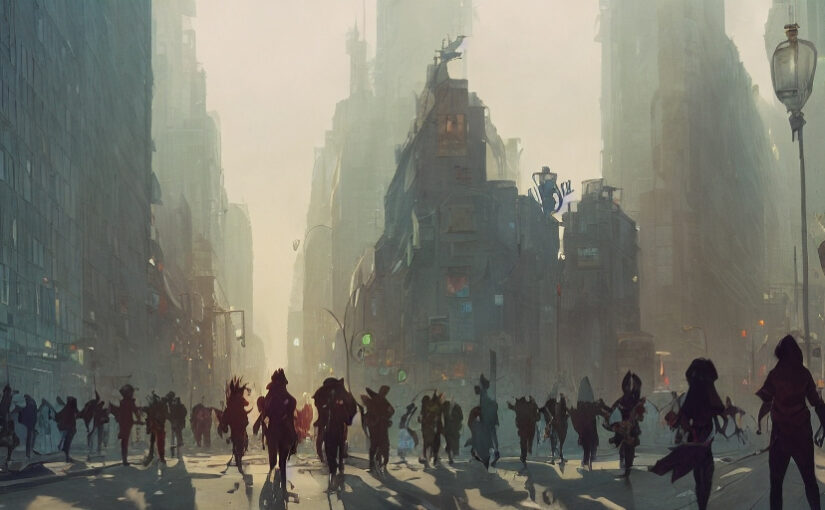In this unique period of time, we all find ourselves in a period of transition.
The politics of the United States differs substantially from that of the rest of the world. While the “news” media is running amok, and the peoples of the West are just “inches away” from (what could be) open revolt.
If the USA defaults on it’s debt, the USA will die. Period. It will be over.
But if it raises the debt ceiling, that and loss of overall global confidence in the USD will cause inflation to reach unmanageable heights. No matter how you look at it, a shit-storm is coming towards the USA.
The only question is when…
US ComSec Gina Raimondo said the US “won’t tolerate” China’s decision to ban chips by Micron Technology in some critical sectors, saying Washington sees it as “plain and simple, economic coercion” and won’t tolerate it.” How will the US retaliate?
China has tolerated the US non-sense for decades, China today does not need to trade with the US, does not need to use the USD, does not need the US technology, so US sanctions are harmless. China’s military is capable to protect itself, so the US can only attack China’s interest in other countries.
Seriously, I have no idea what the US will do, as it has exhausted its arsenal against China.
Beijing to cooperate with Brussels in investigating sanction-circumventing companies if provided with evidence
So far the EU hasn't substantiated its claims & risks countersanctions, says Fu Cong, Chinese ambassador to the EU. Plus, Ukrainian FM casts doubt over WSJ scoop on Beijing's proposals to Europe
Brussels has failed to provide details about certain Chinese companies’ alleged violations of European Union trade sanctions on Russia and refused to work with China in investigating the claims, Fu Cong, the Chinese ambassador to the European Union says.
Thus, Brussels risks a “strong response” from Beijing if it indeed sanctions the Chinese firms, Fu says in an interview with New Statesman by Bruno Maçães, the Portuguese Europe minister from 2013-2015, who describes Fu as “well-regarded in Brussels: most people I meet praise his cunning intelligence.”
Qin Gang, State Councilor and Foreign Minister, has already drawn the line on May 10 in Berlin
China does not sell weapons to parties involved in the Ukraine crisis and prudently handles the export of dual-use items in accordance with laws and regulations. Normal exchanges and cooperation between Chinese and Russian enterprises should not be affected. China resolutely opposes long-arm jurisdiction and unilateral sanctions against other countries in accordance with its own laws, and will take necessary measures to firmly safeguard the legitimate rights and interests of Chinese companies.
At the heart of the potential tit-for-tat that will most certainly, as Maçães correctly observed, “start a spiral of retaliatory sanctions that neither side will be able to stop,” is whether the Chinese companies have engaged in “importing electronic components from Europe in order to re-export them to Russia.”
The Financial Times first reported the EU’s plan on May 8 but unfortunately obscured the crucial justification for potential EU sanction of the Chinese firms that they allegedly imported dual-use goods from the EU and then sold them to Russia. Because the report basically didn’t mention the “import from EU” report until quoting an EU internal document in the seventh paragraph, less informed readers are likely to believe Brussels was trying to impose sanctions simply because of dual-use exports to Russia, which is exactly the Reuters dispatch reporting the FT scoop did.
It’s important to note that there is a major difference between EU sanctions and U.S. sanctions. As Josep Borrell, the EU’s High Representative for Foreign Affairs and Security Policy, recently clarified on the circumvention of EU sanctions against Russia
We also don’t want to sell technological products and components that Russia needs for its war machine. These are our decisions that are binding EU economic operators. Even if we would like other countries to do the same, we cannot force them, because our ‘sanctions’, are not extraterritorial.
So by the EU’s rules, the key is not exactly whether these Chinese firms have just exported dual-use goods to Russia, but whether they have circumvented the bloc’s trade restrictions forbidding certain goods from the EU to Russia.
Here, the Chinese ambassador says he needs evidence – even in private consultations that haven’t been reported. He even questioned if the potential sanctions would have been ex post facto. From the transcript of the interview published by the Chinese Mission in Brussels (New Statesman has a paywall.)
Fu Cong: First, let me say when it comes to Chinese exports to Russia, China has not provided any military equipment to Russia, and China has exercised extreme caution when it comes to dual-use items. At the same time, China maintains normal economic relations and cooperation with Russia. So these normal economic cooperation and activities should not be interfered with, and it should not be the reason for any coercive measures from any side, either from the US or from the European side. The second point I want to say is that we are against unilateral sanctions without the basis of international law or the authorization of (UN) Security Council resolutions. In particular, we are firmly against the extraterritorial jurisdiction of all these measures. These are our basic positions.
When it comes to these companies, let me be very clear: if the European side imposes sanctions on Chinese companies without providing us with any solid evidence to show that these companies are engaged with activities that may circumvent or that have circumvented the EU sanctions on Russia, then we certainly will retaliate. Because, as a government, we have the obligation and duty to safeguard the legitimate interests of our companies. But let me also emphasize that we want to resolve this issue in a cooperative way. I understand this 11th round of sanctions is aimed mainly at preventing circumvention. If the EU side has evidence that Chinese companies are engaged in such activities, please show us the evidence.
And also, I have a question to ask. Now we know that they want to prevent the circumvention, but when the European companies export those items, was there a requirement in the contract that says that you should not re-transfer these items to Russia or to any other country? Because actually, in our case, if you want to prevent a re-transfer of certain items, we require what we call End-User Certificates (EUCs). So when the transaction was made, was there such a clause? Was there such a requirement? You cannot use a new law to penalize an entity for their actions that happened before this new law entered into force. This is the basic principle of the rule of law, right? So that’s why we say that we need to talk about this. But unfortunately, we have approached the EU side, and we have not been given any clear explanations. One thing they did tell us was that they did not have solid evidence that those companies had re-exported the items they had imported from the EU companies to Russia.
New Statesman: They said they did not?
Fu Cong: They did not. They said that they had noticed a sharp increase in the import of certain items. But I said that there may be legitimate reasons, right? And that’s why I said if you have concerns and if you have evidence, show that to me. Maybe we have a legitimate explanation for that, and we can investigate for you. But unfortunately, the EU side has not picked up or responded to our gesture to resolve this in a cooperative manner. Actually, let me also emphasize that what the EU is saying is that they will put the Chinese entities on the list, which is basically a control list. So in the future, these companies should be companies of concern, and certain items should not be exported to them. They say that this is not an extraterritorial application of their sanctions. But this is exactly the extraterritorial application of sanctions. This is exactly what the US has been doing when they sanction foreign companies: they put foreign companies on what they call the entity list. I’m very sad to see that the EU is copying what the US has been doing in the past years. I would even add that it is in violation of the EU’s own position against the extraterritorial application of national sanctions. They are doing exactly the same as the US in this case. So we have great concern.
Fu has worked very hard to stabilize China-EU relations for the past six months since taking over as Beijing’s envoy in Brussels. European Council President Charles Michel visited Beijing in December and European Commission President Ursula von der Leyen in April. High Representative Josep Borrell was supposed to visit Beijing as well (and deliver a speech at the Center for China and Globalization), but unfortunately tested positive for COVID-19 before boarding the plane.
An AI answer
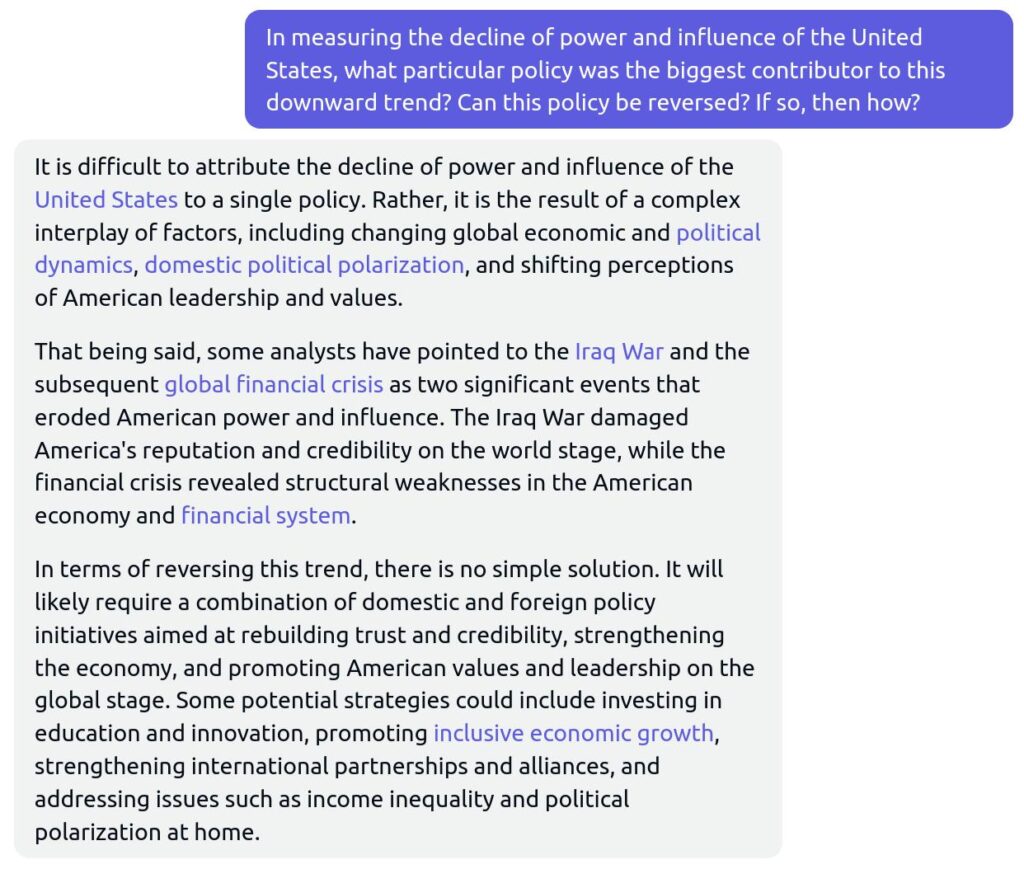
NASA chief’s ‘cliché’ accusations against China ‘reflect lack of confidence and narrow mindset’
7-Year-Old Says He Was in 9/11 Plane Crash
A 7-year-old boy remembers falling off of the World Trade Center on 9/11 in this flashback clip from Season 1, Episode 1 of “The Ghost Inside My Child.”
Why are so many Americans against Chinese self reliance? Most Americans I have talked with about this say a self-reliant China is bad news for US corporations and should be stopped quickly to keep China in America’s pocket. Why is that the case?
Less than hundred years ago the laws allow the white man to kill Chinese like killing a dog in the U.S. Less than 60 years ago if a white man got on a public transport in the U.S. a coloured person need to give his seat to the white man.
Today many Americans people on QUORA is baffled by my calling a spade a spade. They expect a Chinese sounding name to be submissive and subservient towards Caucasians. Hence they call me all kinds of slur and derogatory names because l refused to be their slave.
US barely can accept another white nation to take over let alone a yellow nation and worst a system they slur and demonised for 78 years overtake them and collapsed their system they fooled themselves into thinking it is the best.
But the truth is the Chinese has overtaken them conclusively and comprehensively and there is no turning back. If anything the U.S. is collapsing harder by the day.
Cajun Crispy Oven-Fried Chicken
Jazz up your weeknight dinner with Cajun spiced panko-coated oven-fried chicken.

Prep: 10 min | Bake: 20 min | Yield: 4 servings
Ingredients
- 1/2 cup unseasoned panko bread crumbs
- 1 teaspoon McCormick® Garlic Powder
- 1 teaspoon McCormick® Paprika
- 1/2 teaspoon salt
- 1/2 teaspoon McCormick® Thyme Leaves
- 1/4 teaspoon McCormick® Pure Ground Black Pepper
- 1 1/4 pounds boneless skinless chicken breasts halves
- 1/4 cup milk
- 1 tablespoon butter, melted
Instructions
- Heat oven to 425 degrees F.
- Mix panko and seasonings in shallow dish. Moisten chicken with milk. Coat evenly with panko mixture.
- Place chicken in single layer on foil-lined 15 x 10 x 1 inch baking pan sprayed with no stick cooking spray. Drizzle with melted butter.
- Bake for 15 to 20 minutes or until chicken is cooked through.
Why Is China Banned From ISS? Beijing Launches First Part of Its Own Station
China successfully launched the first module of its own space station on Thursday, prompting curiosity about why the country does not simply use the International Space Station (ISS), according to Google Search data.The core module of China’s station, which will eventually be known as Tiangong, or the China Space Station (CSS), is the largest spacecraft China has ever developed and is 54.4 feet long, 13.7 feet in diameter, and weighs nearly 25 tons
Once complete, Tiangong will form a T-shape with the core Tianhe module in the middle and laboratory modules docked around it.
Bai Linhou, deputy chief designer of the space station at the China Academy of Space Technology (CAST), told the Xinhua news agency the station is “expected to contribute to the peaceful development and utilization of space resources through international cooperation.”
In 2019, the U.N. confirmed that six experiments were going to be conducted on the CSS involving institutions from Germany, Switzerland, India, Russia and others.
Gu Yidong, chief scientist of the China Manned Space program, told Scientific American: “We do not intend to compete with the ISS in terms of scale.” But the elephant in the room remains: China has never been to the ISS.
As its name suggests, the International Space Station is a global project, even though the vast majority of its inhabitants have come from the U.S. and Russia.
Other countries that have sent astronauts to the ISS include Canada, Brazil, the U.K., the Netherlands, Germany, Belgium, South Korea, Malaysia, Japan and others.
China is conspicuous by its absence from this list, and the reason lies simply in the fact that the U.S. does not want it to be there.
The 2011 Department of Defense and Full-Year Continuing Appropriations Act, which set rules and funding for defense and other U.S. government agencies for that year, states in section 1340 that NASA may not use funds from that division to collaborate in any way with China unless a law specifically authorizes it.
Reuters reported in 2015 that the ban was due to human rights issues and national security concerns.
In 2015, space analyst Miles O’Brien told CNN the idea of the U.S. collaborating with China “gets shut down immediately” whenever it is brought up near Congress, adding that the Chinese Communist Party is “viewed as a government that seeks to take our intellectual property.”
“The Chinese government has always advocated the peaceful use of outer space,” Wang Jin, a spokesman for Beijing’s Ministry of Defense, said at the time.
The future of the ISS is currently uncertain. Partnerships and funding are due to run out in 2024. NASA told the Financial Times this month: “From a technical standpoint, we have cleared ISS to fly until the end of 2028.”
But Russia—one of the station’s most crucial partners—has already said it would withdraw from the program in 2025, marking the end of a significant period of international cooperation.
This Sexy Piece Of Clothing Is Becoming Increasingly Popular In Japan

This knitted sleeveless sweater with a large cut-back is all the rage in Japan right now, and it’s not hard to see why.





Robot Inside The Great Pyramid: Reveals a Secret Door in a Shaft
https://youtu.be/C79Vfxqsg5s
ap6y3





Hidden Chamber in Great #PYRAMID as big as a PLANE Confirmed by New Scan | Egypt
https://youtu.be/p4SrdfnZhnA
15 Fascinating Facts About The Sumerians
The ancient civilization of Sumer never ceases to captivate and intrigue. Scholars and historians are constantly busy uncovering new details and aspects of this civilization, even centuries after the first discoveries were made. Long ago forgotten and buried by sands of time, Sumer and its cities were the first foundations of all human progress and civilization. It is because of this that it never fails to impress. Here are just a few of the most fascinating facts about the ancient Sumerian civilization.
1. One of the World’s First Functioning Calendars Belonged to the Sumerians
Did you know that the Sumerians were amongst the first to have developed a functioning calendar? It is dated to roughly 2100 BC, and was divided into 12 lunar months, each numbering 29 or 30 days – much like the one we use today. The Sumerians had no weeks in their calendar, but even so they always had holy days and days free from work. These were usually celebrated on the 1st, 7th, and 15th of each month. Of course, each Sumerian city had its own special feast days that were celebrated at different times. Each month began with the sighting of the new moon.
2. Their Efficient Sexagesimal Numeral System is Still in Use
The Ancient Sumerians were skilled mathematicians, and were incredibly advanced for such an ancient time. They developed a numeral system with number 60 as its base. It is known as a sexagesimal numeral system – and it is still in use today! That is why we have 60 minutes in an hour, 360 degrees in a circle, and 60 degrees in an acute angle! The Sumerians developed the system and refined it, and it was later passed on to the Babylonians, and from them to other civilizations in the world. Today it is, of course, not the exact same system, but has many similarities and the same origins!
- The Magnificent Ishtar Gate of Babylon
- The Ancient Epic of Gilgamesh and the Precession of the Equinox
3. The City-States of Sumer Were Often at War With One Another
The Sumerian world consisted of many semi-independent city states, which were often very close to one another – almost within sight. But even so, they were not strangers to conflict. War was a staple of Sumerian life, and each city had its own standing army. When disputes over borders became an issue, it came to blows and bloodshed. One of the earliest depictions of Sumerian warfare was discovered on the Standard of Ur, an elaborate scene discovered in the tomb of King Ur-Pabilsag. Another important depiction is found on the Stele of the Vultures, which depicts warriors arranged in a phalanx formation. It is possible that the Sumerians invented this military tactic.
4. They Penned One of the First Epic Poems in History
One of the world’s first epic poems comes to us from the Sumerians. One would think that such an ancient civilization had little taste for poetry and arts. But that would be quite wrong to assume. The Sumerians were highly advanced for their time, and thus penned down the world’s first epic poem – the Epic of Gilgamesh . Centered on a mythical hero and his exploits, the poem was literally carved in stone: preserved in clay tablets upon which the lines were carefully incised. Containing both mythical human heroes as well as gods and supernatural beings, the Epic of Gilgamesh is a great insight into the culture and the beliefs of the ancient Sumerians, allowing us to better understand their affinities and aspects of their everyday life.
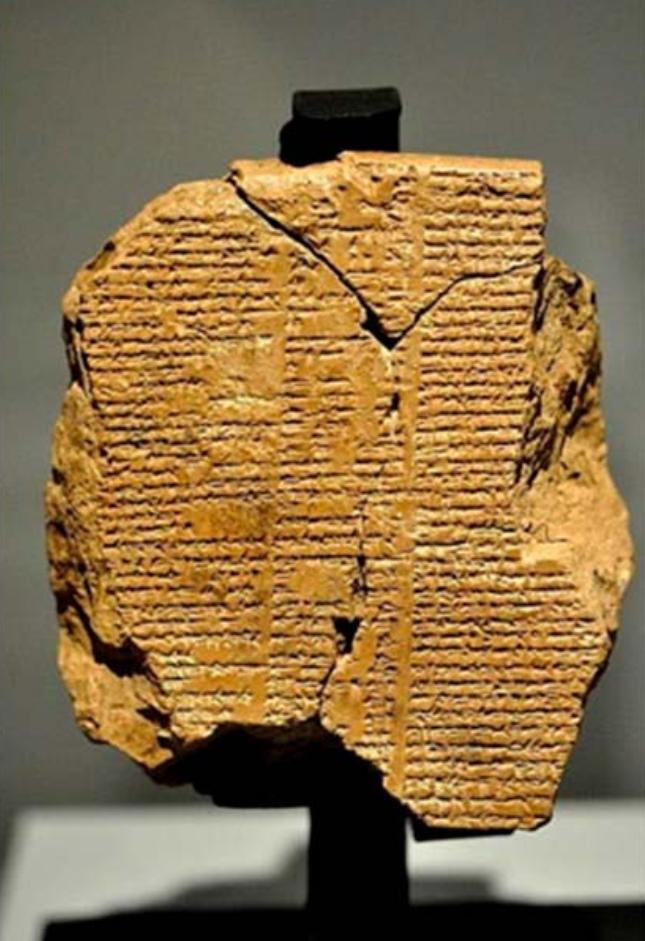
Tablet V of the Epic of Gilgamesh. ( CC BY-SA 4.0 )
5. The Remnants of their Vast Civilization Were Long Forgotten to History
Sumerian civilization thrived for many centuries, but it eventually succumbed to invasions by Semitic-speaking Amorians and the Akkadian-speaking Babylonians. Slowly it began disappearing, losing its identity and lapsing into distant memory. The Sumerian language remained as a seldom-used sacred language, until it too disappeared for good. Centuries rolled on, turning into millennia, and Sumer was fully forgotten by mankind. It wasn’t until the 1800s that the diligent work of mainly British archeologists brought to light the tattered remnants of this pioneering world civilization. Scholars began piecing together the puzzle of Sumer’s identity, from scratch, until they finally understood what they were dealing with. So, after being forgotten for thousands of years, Sumer once again returned to the spotlight.
6. Sumer’s Eridu Was the World’s First City
Sumer, being one of the world’s first advanced civilizations, naturally had the world’s first cities. Sure, they weren’t cities as we know them today: they were more like urban settlements that grew around great temples and ziggurats. And one of the very first of the Sumerian cities was Eridu. Today, it is considered as one of the very first Sumerian settlements, which also grew into one of the most powerful city-states.
Eridu was situated just 12 kilometers (8 mi) from Ur, almost within sight of it. When it was built, the city was situated roughly on the coastline, with the Persian Gulf stretching before it. Now, many millennia later, the ruins of the city are situated far inland.
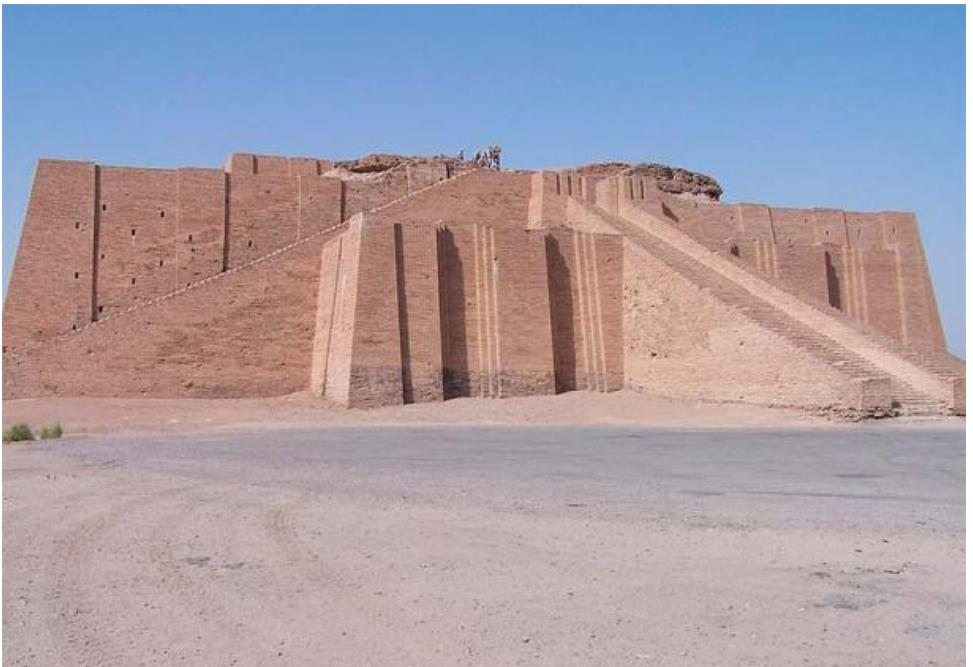
The Great Ziggurat of Ur, built during the Third Dynasty of Ur (c. 2100 BC), dedicated to the moon god Nanna. (Hardnfast/ CC BY 3.0 )
7. Clay Tablets Perfectly Preserve the History of Sumer
Between 500,000 and 2,000,000 Sumerian clay tablets have been excavated to date, with only a part or them read and researched. They were the widely used medium by ancient Sumerians – with paper not being invented, soft clay tablets were the next best thing.
With special reed pens, cuneiform writing was carefully incised. Once baked, the clay tablet remained solid and durable. Everything and anything was written on these tablets: stories, poems, accounts, complaints, letters, diplomatic exchanges, treaties, histories, and so on. Today, clay tablets provide one of the most important insights into the lives and practices of ancient Sumerians, and are an invaluable historic heritage. One of the largest libraries of clay tablets was found in the remains of the Library of Ashurbanipal, the last great Assyrian King. The ruins contained over 30,000 unique clay tablets.
8. The Ancient Sumerians Invented the Plow and Heralded Progress
There is no doubt that the plow is one of the most important creations of mankind. This tool was the driving force before all progress in the world. And it is believed that the Sumerians invented it, as early as 3100 BC. The plow allowed them to harness the power of domesticated animals, and thus till the land and ensure fertile crops. This was a revolution for agriculture, of industry and progress. The plow quickly spread across the world, thoroughly reshaping it in the process. The Ancient Egyptians soon adopted it as well. At first, it was a crude wooden tool, but it was refined over the centuries.

Leonard Woolley holding the hardened plaster mold of the Sumerian Queen’s Lyre, 1922. ( Public Domain )
9. Oldest Surviving Stringed Instruments Were Found at Ur
The Sumerians were known for their innovations and inventions, some of which defined later civilizations. One of these could have been the stringed instrument, more specifically the lyre. While it is not known for certain whether the lyre was a Sumerian design, it is certain that those discovered at Ur are the world’s oldest surviving instruments. The lyres, exquisitely made and decorated, were found squished and fragmented, but have been painstakingly rebuilt. They are dated to roughly 2550 BC, which makes them more than 4500 years old! The lyres – more specifically harps – were discovered in the Royal Cemetery of Ur, in a lavish tomb that belonged to a high-ranking woman, likely a queen. Made with wood, silver, gold, and other quality materials, they were most certainly a symbol of power and prestige, and confirm to us that the Sumerians knew and loved music and arts.
10. Beer Was the Staple Food of Every Sumerian
Everyone loves a cold pint of beer on a hot summer’s day, right? The Sumerians certainly did – they were extremely fond of beer and brewing. So much so, that they had a goddess of just that – brewing and beer.
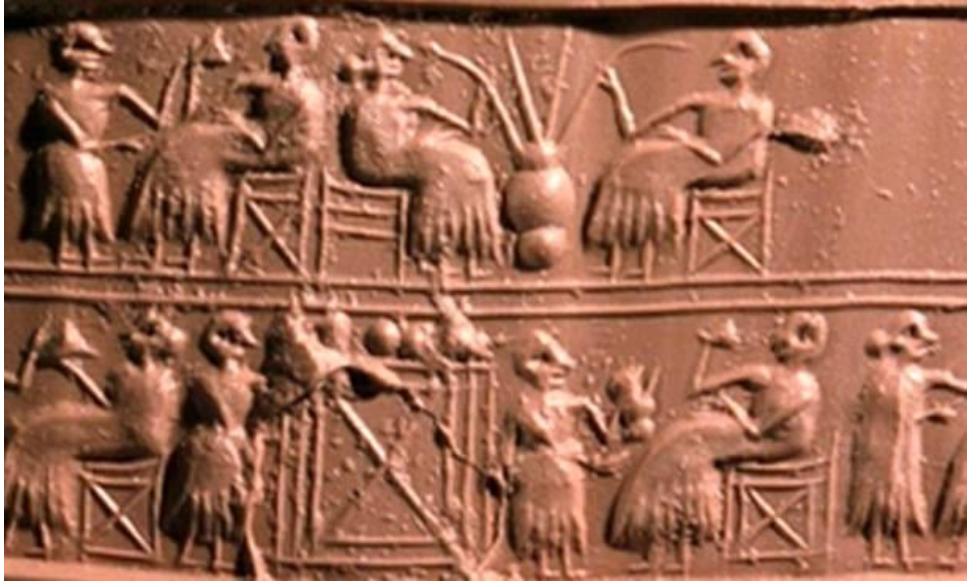
Impression of a Sumerian cylinder seal from the Early Dynastic IIIa period (ca. 2600 BC). Persons drinking beer are depicted in the upper row. ( Cuneiform Digital Library Journal )
Her name was Ninkasi, and she was revered by all the beer drinkers in ancient Sumer. It is important to note that ancient beer was not like modern beer: it was thick and mushy, and very nutritious, and likely not too cold. The Sumerians consumed it through special straws and strainers. Beer was consumed by both the commoners and the nobles, and was brewed in very large quantities. Clay tablets with special brewing recipes were recovered, as well as tablets that record the rationing of beer for workers. That’s right: in Sumer, workers were paid by a daily ration of tasty and nutritious beer. Could be worse.
- Sargon of Akkad: Familiar and Legendary Tales of a Famous Mesopotamian King
- Representation of Sumerian Elites Detected in the Crespi Gold Tablets
11. Men of Sumer Had a Distinct and Recognizable Hairstyle
Did you know that the Sumerians sported a unique hairstyle? Many reliefs and depictions of common men of Sumer show them wearing their hair short on the sides and back, and curly and longer on the front! Otherwise, a lot of depictions show them completely bald and beardless. This could have been a trend in their society. In the ancient world, hairstyles and beards were often a distinct mark of a tribe or a society. To differentiate themselves from the neighboring cultures, the Sumerians likely adopted such unique hairstyles.
12. In Their Long History, They Had Just One Queen
The Sumerian King List is a literary work composed around 2000 BC, and preserved on several clay tablets. It lists the cities of Sumer, their kings, and the lengths of their reigns. It helped scholars to learn more about the various rulers of ancient Sumer. And virtually all of the rulers on the lists are men – kings. Yet there is one woman on the list: Queen Kubaba . Before coming to the throne, she was apparently a brewess – producing beer for commercial use. She was the queen of Kish, an important city-state in ancient Sumer. She was followed on the throne by her son Puzur-Suen, and grandson, Ur-Zababa. Sumer wasn’t solely a man’s world after all.
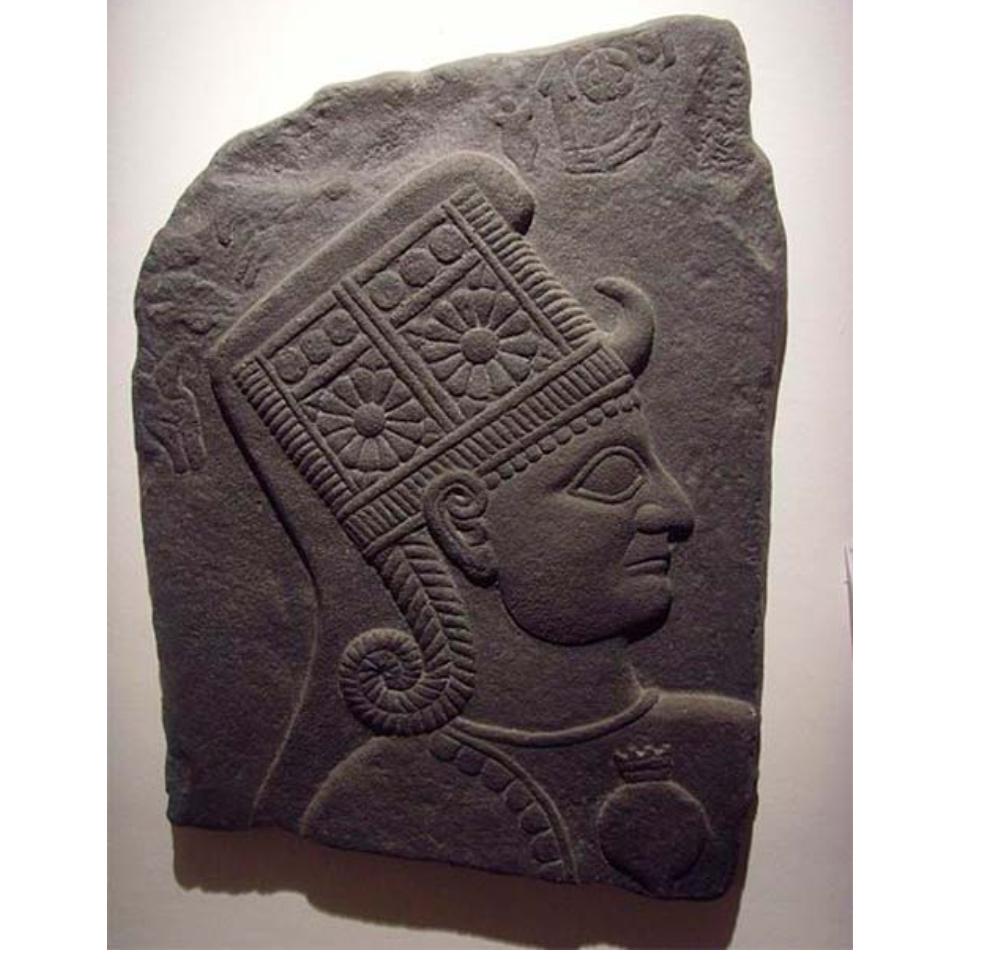
Relief of Queen Kubaba, only woman to make the King’s List. ( Public Domain )
13. World’s Earliest Customer Complaints Were Found in Ur
With advanced civilizations, come advanced tricksters. Ea-Nasir was a rich copper trader from the city of Ur, but his business practices were far from ideal. During the excavation of the city ruins, one house – Ea-Nasir’s – had a room full of clay tablets received from disgruntled customers. Apparently, Ea-Nasir would take money for quality copper ingots, but send poor quality ones instead. This resulted in a number of customer complaints against him. The most famous is the complaint from the merchant in Dilmun, whose messengers were treated badly, and his shipment of copper never arrived. Studying the numerous tablets, scholars deduced that Ea-Nasir wasn’t really troubled by these complaints, and continued to ignore them repeatedly.
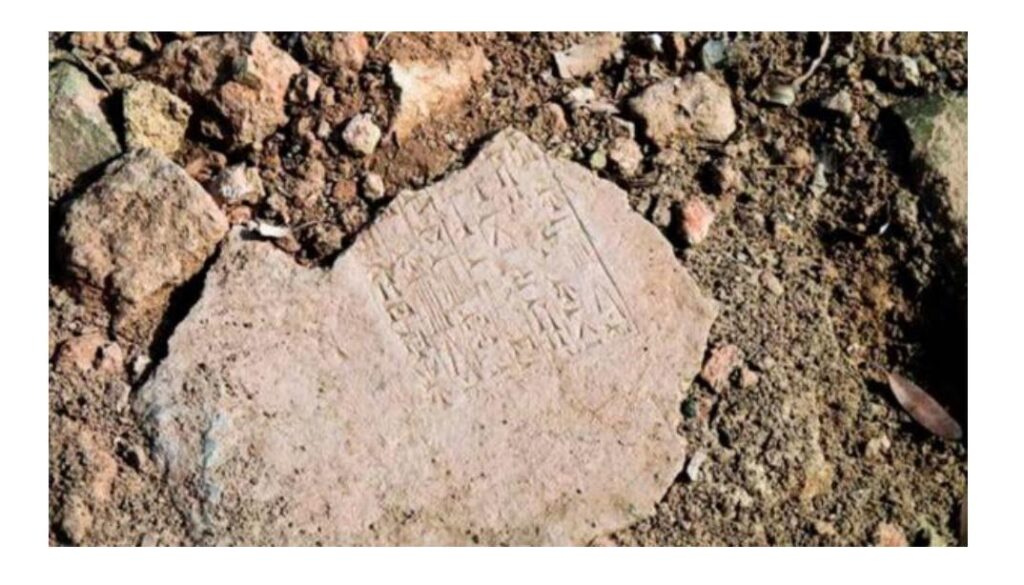
An example of a cuneiform tablet. ( homocosmicos/Adobe Stock)
14. Sumerian Cuneiform is the World’s Earliest Writing System
The Sumerians were advanced in so many ways. Needless to say, one of their most important inventions was writing. Their cuneiform alphabet is amongst the world’s earliest writing systems. At first, it was just a number of symbols and images that were meant to represent words and actions. Over time, it evolved into a complex writing system that consisted of numerous tiny wedges. Incised with a special stylus, these symbols were written on soft clay tablets, which were then baked and hardened. It was an efficient, elaborate, and advanced writing system that was far ahead of its time.
Today, scholars are able to learn so much about ancient Sumer, thanks to the deciphering of the cuneiform script in the 19th century. It was, however, a painstaking process, and the script itself was an utter mystery for several centuries after its discovery.
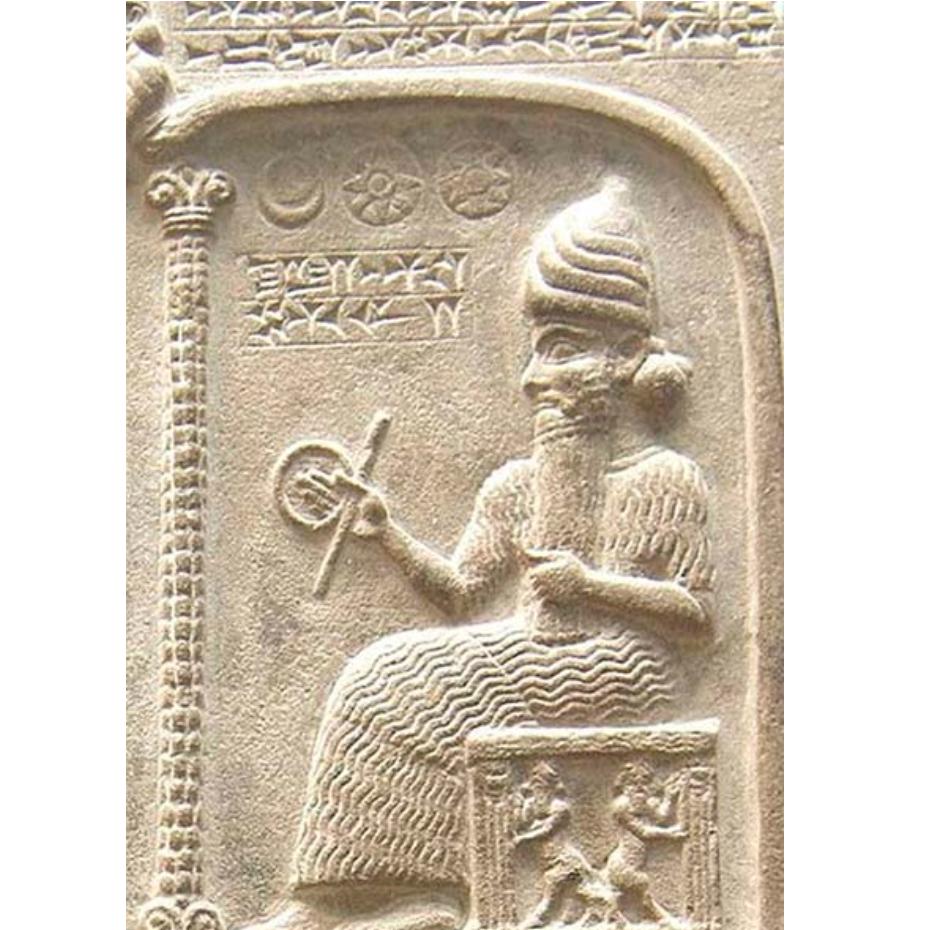
The god Utu from the Tablet of Shamash ( CC BY-SA 1.0 )
15. Each City-State of Sumer Had Its Own Patron God
Ancient Sumer was divided into a number of semi-independent city-states. Some of the most powerful of these were Ur, Bad-Tibira, Eridu, Shuruppak, Sippar, Lagash, Kish, Nippur, and others. And each of these cities had its own patron deity, its protector and benefactor. There were lavish temples devoted to these gods in each city, as well as large pyramid-like ziggurats. There were around 7 principal Sumerian deities, and hundreds of minor ones. For example, Sippar was the cult-site of the Sun God Utu (Shamash to Akkadians), while Shuruppak was the city of goddess Ninlil.
15 Biggest African Songs That Broke The Internet in 2022
Sons of God: Sumerian Elite Ruling Sumerian Class Abducting Khabiru Women
Translators, theologians, and biblical commentators provide many different theories to explain who the Bible is referring to as “the sons of God,” “the Nephilim,” “the men of renown,” and “the daughters of men,” but archaeology from ancient Mesopotamia adds a whole new layer of biographical perspective of these biblical figures.

The passage in question is in Genesis 6:4-5, and refers to an epoch before the great flood. According to most versions, it tells there were giants upon the land in those days, and after that. It is presumed that “after that” means after the great flood, so whoever these giants were, they were on earth before and after the flood.
It goes on to say that those giants were on earth whenever ‘the sons of God’ visited the ‘daughters of men’ and they fathered children for themselves.
It also explains that “those were the giants who were from long ago, the people of renown.”
Thinking back to ancient legends and myths, it takes no stretch of the imagination to see characters like Hercules and Perseus, or as is found in the ancient Sumerian myths of Gilgamesh and Dumuzi, and similar characters from nations all over the world, as heroes of old.
That is exactly what these ancient characters were, heroes of old and men of renown.
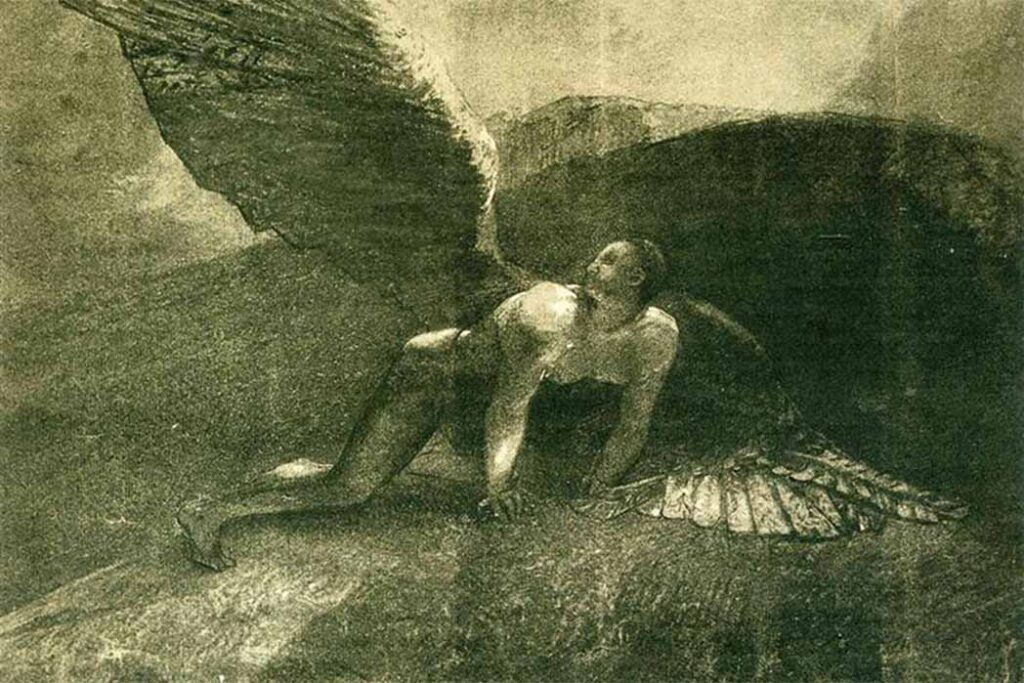
The Qumran Book of Giants tells the story of pre-diluvian origins of evil and the fate of the Watchers and their giant offspring. Fallen Angel by Odilon Redon, (1872). (Public Domain)
The texts of the Old Testament were preserved through a few different channels. The most commonly available text of the Old Testament today came from groups of Jewish scribes in the 10th century AD called the Masoretes.
The Masoretic Text is the one that was used as the source for most modern translations of the Old Testament, although this source text contains many problems and inconsistencies when it comes to early biblical genealogies and the dates given for events and lifespans.
The Israelite Samaritan Torah is a parallel source text that potentially date back to the sixth century BC, but unfortunately only contains the first five books of the Old Testament.
Become a member to read more OR login here
New discovery inside Great Pyramid of Giza reveals hidden secrets
The Menehune of Hawaii – Ancient Race or Fictional Fairytale?
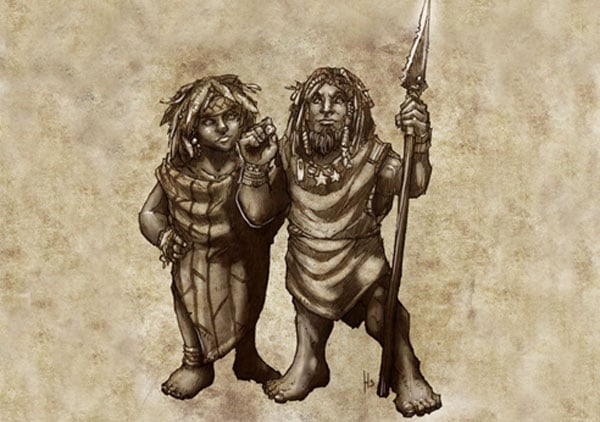
In Hawaiian mythology, the Menehune are said to be an ancient race of people small in stature, who lived in Hawaii before settlers arrived from Polynesia. Many scholars attribute ancient structures found on the Hawaiian Islands to the Menehune. However, others have argued that the legends of the Menehune are a post-European contact mythology and that no such race existed.
The mythology of the Menehune is as old as the beginnings of Polynesian history. When the first Polynesians arrived in Hawaii, they found dams, fish-ponds, roads, and even temples, all said to have been built by the Menehune who were superb craftspeople. Some of these structures still exist, and the highly-skilled craftsmanship is evident. According to legend, each Menehune was a master of a certain craft and had one special function they accomplished with great precision and expertise. They would set out at dusk to build something in one night, and if this was not achieved, it would be abandoned.
Some scholars, such as folklorist Katharine Luomala, theorize that the Menehune were the first settlers of Hawaii, descendants of the Marquesas islanders who were believed to have first occupied the Hawaiian Islands from around 0 to 350 AD. When the Tahitian invasion occurred in about 1100 AD, the first settlers were subdued by the Tahitians, who referred to the inhabitants as ‘manahune’ (which means ‘lowly people’ or ‘low social status’ and not diminutive in stature). They fled to the mountains and later came to be called ‘Menehune’. Proponents of this theory point to an 1820 census which listed 65 people as Menehune.
Luomala claims that the Menehune are not mentioned in pre-contact mythology and therefore the name does not refer to an ancient race of people. However, this argument holds little weight as most accounts of the past were passed down through word-of-mouth from one generation to the next.
If Luomala, and other scholars in her camp, is correct, and there was no ancient race of skilled craftspeople that predated the Polynesians, then there must be an alternative explanation for the ancient constructions of advanced design, which predated any known population in Hawaii. However, no alternative explanations exist and most history books still maintain that the Polynesians were the first inhabitants of Hawaii, some 1,500 years ago. So let’s examine some of the ancient constructions that have been attributed to the Menehune in the mythology of the region.
Alekoko Fishpond Wall at Niumalu, Kauaʻi
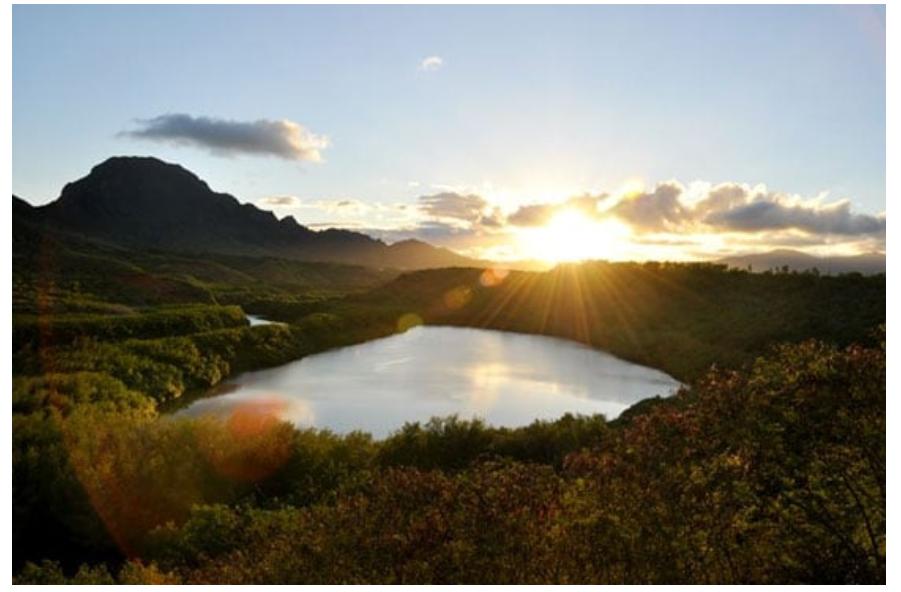
Alekoko, Kauai: Menehune Fishpond. Photo source .
The Alekoko Fishpond, sometimes called the Menehune Fishpond, is one of the finest examples of ancient Hawaiian aquaculture. A lava rock wall between the pond and the Hulei’a River, which is 900 feet (274 m) long and 5 feet (1.5 m) high, was built to create a dam across a portion of the river in order to trap young fish until they grew large enough to consume. The stones that were used come from Makaweli village, some 25 miles (40 km) away. It is considered to be an unexplained engineering achievement and was placed on the National Register of Historic Places in 1973.
Hawaiian legend states that the pond was built in one night by the Menehune, who formed an assembly line from the fishpond location to Makaweli, passing stones one-by-one from start to end point.
The Ceremonial Site of Necker Island

Heiau at Mokumanamana (Necker Island). Photo source .
Necker Island is part of the Northwestern Hawaiian Islands. Few signs of long-term human habitation have been found. However, the island contains 52 archaeological site with 33 ceremonial heiau (basalt upright stones), believed to be celestially oriented, and stone artifacts much like those found in the main Hawaiian Islands. The heiau vary only slightly in design, but generally feature rectangular platforms, courts and upright stones. One of the largest of these ceremonial sites measures 18.6 meters by 8.2 meters. Eleven upright stones, of what are believed to be the original 19, are still standing.
Many anthropologists believe that the island was a ceremonial and religious site. According to the myths and legends of the people of Kauai, which lies to the southeast, Necker Island was the last known refuge for the Menehune. According to the legend, the Menehune settled on Necker after being chased off Kaua’i by the stronger Polynesians and subsequently built the various stone structures there. Visits to the island are said to have started a few hundred years after the main Hawaiian Islands were inhabited, and ended a few hundred years before European contact.
The Kīkīaola Ditch at Waimea, Kauaʻi
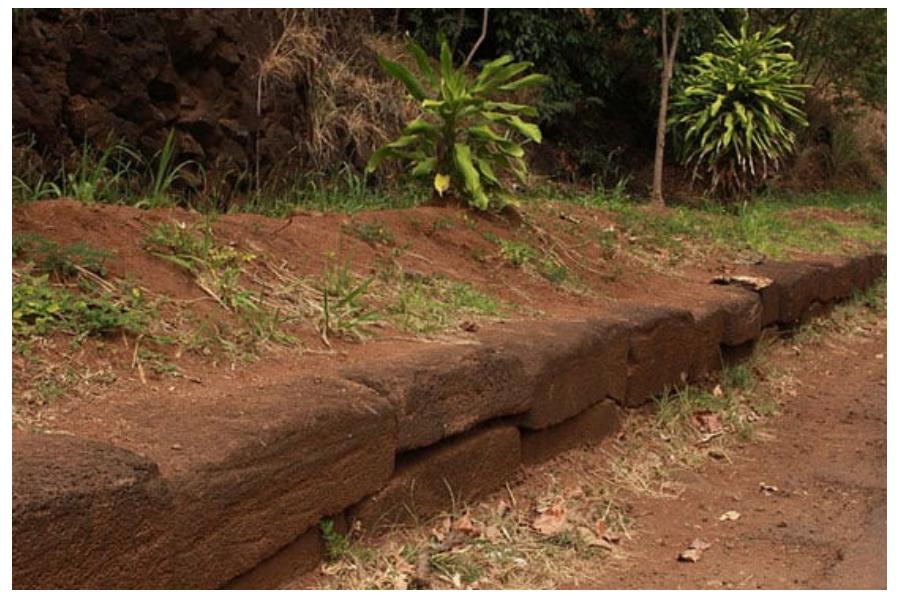
Kikiaola facing stones. Photo source .
Kīkīaola is a historic irrigation ditch located near Waimea on the island of Kauai. Also known as the Menehune Ditch, it was added to the National Register of Historic Places on November 16, 1984. Hawaiians built many stone-lined ditches to irrigate ponds for growing taro (kalo), but very rarely employed dressed stone to line ditches. The 120 finely cut basalt blocks that line about 200 feet of the outer wall of the Menehune Ditch make it not just exceptional, but “the acme of stone-faced ditches” in the words of archaeologist Wendell C. Bennett. It is purported to have been built by the Menehune.
To date, no human skeletal remains of a physically small race of people have ever been found on Kaua’I or on any other Hawaiian islands. While this does not disprove that a race of small people existed, it does draw the truth behind the legend into question. Nevertheless, there is compelling evidence, both archaeological and in the numerous legends passed down over generations, that suggests that there was indeed an ancient race of highly skilled people who inhabited the Hawaiian islands long before the Polynesians arrived.
Analyzing the North Face Corridor of the Great Pyramid
Cajun Beer Can Chicken
Yield: 4 servings

Ingredients
- 1 (3 1/2 to 4 pound) chicken
- 1 (12 ounce) can beer
- 4 teaspoons dry Cajun seasoning, divided
Instructions
- Using a bottle opener, make three more openings in the top of the can. Empty 1/3 of the beer out to make it only 2/3 full of liquid. Lightly oil the exterior of the can with vegetable oil.
- Wash chicken inside and out and pat dry with paper towels. Sprinkle 2 teaspoons of dry Cajun seasoning (optional) into the cavity and two teaspoons over the outside of the chicken. Put a little foil on the tips of the leg bones to prevent blackening.
- Set up gas or charcoal grill for indirect grilling. For charcoal grills, mound briquettes into two piles on opposite sides of grill. Light. Heat only one side of gas grill, at a temperature of 350 degrees F.
- Stand the beer can on an aluminum pie plate, piece of aluminum foil or special beer can chicken roasting pan. Carefully ease the chicken onto the can, and spread drumsticks away from the body to support the bird in a tripod position. Add chicken, locating the bird between the two piles of charcoal on charcoal grills, or on the side away from heat on gas grills. Cover the grill and barbecue chicken over indirect heat for about 1 1/2 to 2 hours, or until the breast meat reaches 165 degrees F.
- Remove chicken carefully, as there may be hot liquid remaining in the can.
Vintage Photos of Ugly Restaurants in the USA From the Mid-20th Century

The 1950s was a truly unique moment in time. Fresh out of World War II, the world – and North America in particular – were embracing prosperity and a strong economy, built and spurred on by the war.
More and more people were able to access the finer things in life in the 1950s. The times were also a period of conflict – and therefore, of thought and reinvention. The ongoing war on communism in the United States, as well as the Civil Rights Movement, exposed a division in American society.
The world was embracing automation, efficiencies, and simplicity, all with roots in nostalgia, old school familial values, and a distinct pining for prosperity. In the retail and hospitality industries specifically, the 1950s cemented itself as a vibrant time in consumer culture. Restaurants and eateries began to develop their own unique culture and way of doing things – all dependent on the year-to-year pulse of greater society.
h/t: vintag.es



















Why does the Chinese government keep track of its citizens’ every move?
China is too big.
It’s population is five times the size of the USA. (Not four times, as some commenters like to repeat.) Geographically, it’s land mass is larger than the United States (minus the empty tundra of Alaska.). And there are more people in China that speak English than the entire rest of the world combined.
China is enormous.
New York City is a mere 6 million people. China has 200 cities larger than that.
A small rural village in China is larger than Pittsburgh, Pennsylvania.
It’s hard enough for a nation to assure compliance, reduce crime, and create a level playing field for everyone to play upon, but the easy way and the most effective way, is to monitor everyone by AI.
Not by person, but notice trends and actions.
And since China has done this all kinds of crime was nearly eliminated, government corruption fell immediately, and everyone now has “a set at the table”.
Ultimately, the hoarding of money is the cause of so much misery in this world. And those that become very rich are the causes of much of the world’s unhappiness. Hoarding money and turning into billionaire oligarchy is difficult to do without harming and hurting others. And with AI monitoring, the people are assured that it will never happen. The AI searches for people doing bad things. Finds them. Punishes them, and if necessary isolates and eliminates them.
Of course, it’s NOT perfect, but a work in progress. As we used to say in the ‘States; “Rome wasn’t built in a day”.
But at least 1.4 billion people can sleep with roofs over their heads, eat good meals, have reasonable and affordable healthcare, not worry about layoffs on Friday, and live in crime-free areas.
To that I say; It is worth it.
China plans to perform a crewed lunar landing before 2030. What do you think of this goal?
As it appears, China will be the first nation to put men on the moon.
…
Notes:
- There is overwhelming evidence that NASA did not put men on the moon in 1969, nor in the subsequent missions. To paraphrase the head of the Russian space program; “We sent lunar orbiters over the supposed landing sites repeatedly, and there’s nothing there.” Believe what you may. The vast bulk of the world considers the United States to be thieving, lying, and mischievous rogue nation. As time moves on, peoples throughout the globe question the supposed actions and accomplishments of the United States. Indeed, this is a debatable subject, but this is not the place for that debate.
- NASA plans to put a progressively diverse crew on the moon this decade. It will be on a spacecraft that superficially looks like the Apollo spacecraft, but uses technologies not available during the 1960’s. This crew will attempt some trivial “science experiments”, perform some “crowd pleasing” antics, and return home (supposedly) reinvigorated and proud United States.
- The Chinese strategy in space exploration is for long-term objectives, and is proceeding in a systematic step-by-step progression. It is boring, but methodical. The Lunar outpost will consist of members selected from the Global South, and will be the beginnings of a long-duration colony as a step towards (already planned) Mars colonization efforts.
- You can expect that the Chinese WILL visit the supposed Apollo landing locations. They will do so in 3D, high definition color and 7G technology. What they will discover will be broadcast to the world. If they find nothing, and that is what is expected, the implications will be extraordinary.
The UnXplained: Mystery of Devil’s Tower
A giant fossilized tree stump?

